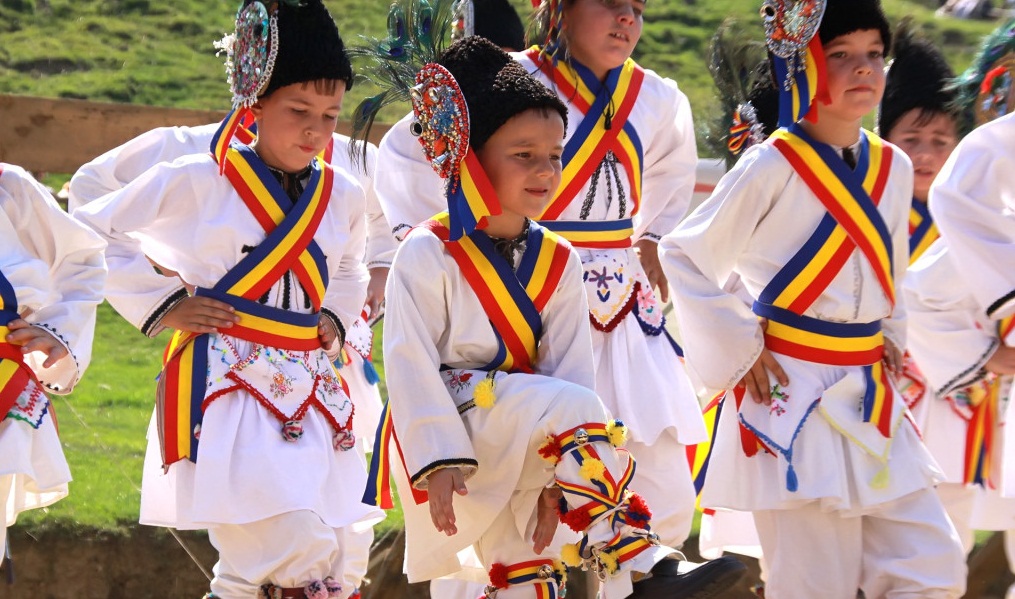Rusalii (Pentecost) holiday customs: Calusarii dance

 An important Romanian celebration is coming up this Sunday, May 23rd. It's called Rusalii or the Descent of the Holly Spirit (the holiday is also called Pentecost sometimes) and it is always celebrated by the Orthodox Church 50 days after Easter. As with most of Christian holidays, this one has roots back in the mythology. The Roman mythology had Rosalia, or the day of the roses, which was dedicated to worshiping the dead and bringing them food and roses.
An important Romanian celebration is coming up this Sunday, May 23rd. It's called Rusalii or the Descent of the Holly Spirit (the holiday is also called Pentecost sometimes) and it is always celebrated by the Orthodox Church 50 days after Easter. As with most of Christian holidays, this one has roots back in the mythology. The Roman mythology had Rosalia, or the day of the roses, which was dedicated to worshiping the dead and bringing them food and roses.
This day is very important for the Christian world as it symbolizes the beginning of the Church. 50 days from Easter, Christ's resurrection, the Holly Spirit descended upon the Apostles and gave them the spiritual gifts needed to spread God's word in the world.
Besides being a religious holiday, and more recently a national holiday too (the first and second day of Rusalii are free days as stated by law), the holiday holds some mythical aspects too. The Romanian folklore mention Rusaliile, who are charmed creatures who come to our world only during this week. They are mythical creatures, the souls of dead girls, with magical seduction powers, who live in the sky, in the mountains, caves, forests and near waters. Many assimilate Rusaliile with Ielele; the tradition goes that Ielele will dance naked in the moon light in what is called “Hora Ielelor” (The Dance of the Iele). These are not evil mythical creatures, they will only do harm if they are provoked or watched while dancing, when they will make those who watch their dance go out of their minds.
Rusaliile need to be chased away and the human souls need to be healed and this is when Calusarii enter the picture. You might have heard or seen the Calusarii dance (there's a sample video with one of the Calusari dances for you below). The Calusarii's dance is a healing and protection ritual – they would dance in people's yards or on the street. The tradition is still kept in more traditional Romanian villages, especially in the south of Romania.
(photo credits: Ovidiu Sopa, www.sibiul.ro)











